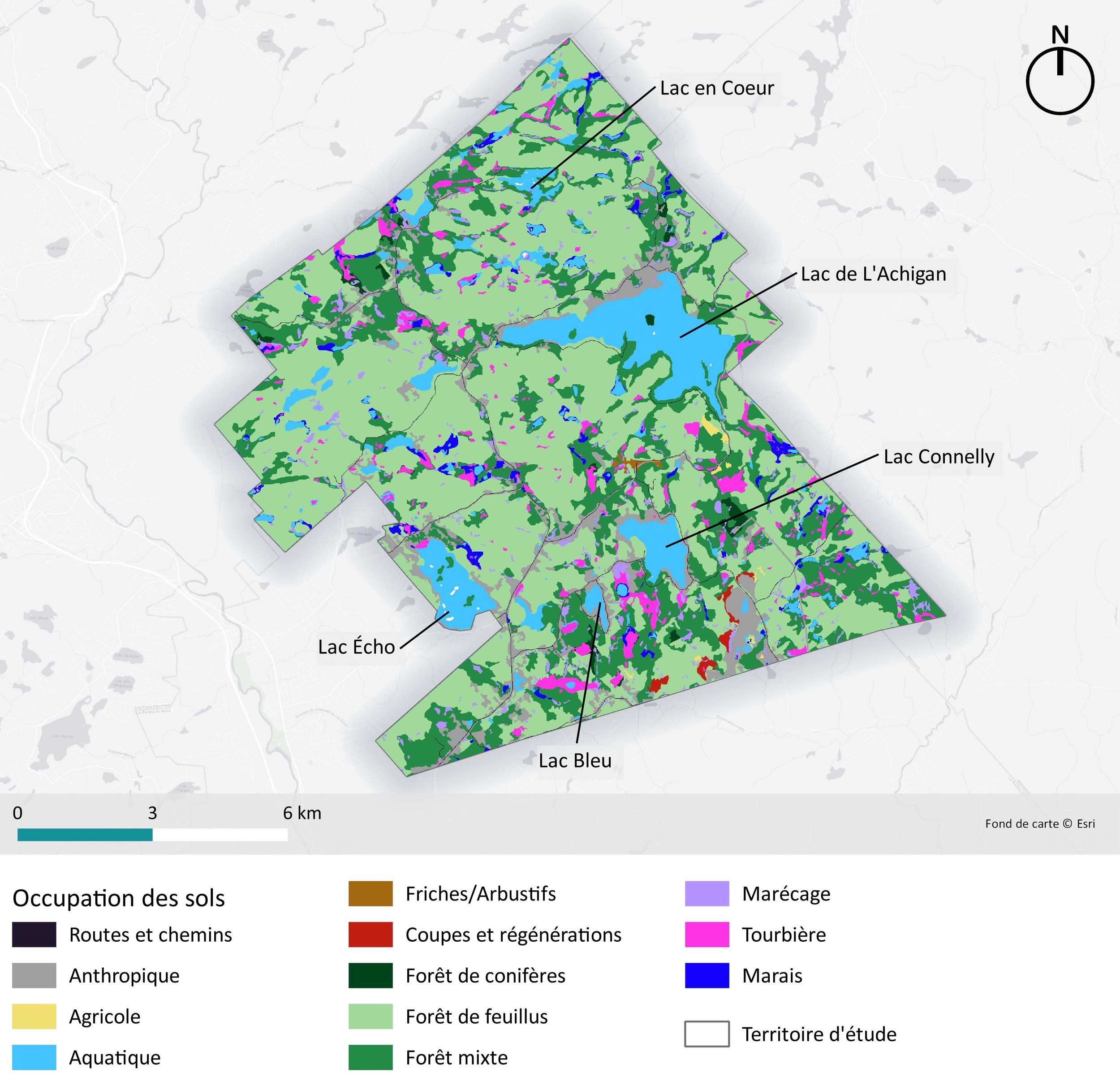Enhancing the role of natural environments in the municipality of Saint-Hippolyte
Natural environments offer many aesthetic, economic, social and cultural benefits to society. In particular, they play a central role in regulating the climate by storing carbon, in reducing erosion and pollution by retaining sediments and nutrients, in mitigating flooding by attenuating surface runoff, and in preserving biodiversity. Yet these environments are increasingly threatened by climate change and human activities (urbanization, intensive agriculture).
The loss of these environments deprives society of the benefits and services that are naturally associated with them, in addition to having a significant impact on the wildlife species that use them as habitats or travel corridors. As a result, local stakeholders are taking an increasing interest in the value of these environments in order to prioritize conservation actions on the territory. Identifying environments with high conservation value involves, for example, locating those that contribute most to the provision of ecosystem services.
In this context, the evaluation of the services provided by natural environments - known as "ecosystem services" - makes it possible to recognize their value and importance in the landscape, and to raise awareness of their conservation among the population, as well as economic and political players. The municipality of Saint-Hippolyte commissioned Habitat to carry out a study aimed at estimating the current value of the territory's natural environments, based on a biophysical and economic assessment of several ecosystem services. Our study is intended as a decision-support tool to help improve land management.
Saint-Hippolyte is located in the Laurentian administrative region, north of Saint-Jérôme. The territory is 92.6% covered by natural environments, 75.3% of which are forested, followed by aquatic and wetland environments.
LAND USE AND SERVICES PROVIDED BY SAINT-HIPPOLYTE'S NATURAL ENVIRONMENTS
Land use
The territory is essentially covered by natural environments: forests, wetlands and aquatic environments. These environments cover 92.6% (12,370 ha) of the territory, while anthropogenic environments and roads occupy 7.1%. Agricultural environments are virtually absent, representing 0.3% of the territory.
Soil retention
Soil retention by natural environments makes it possible to assess the contribution of vegetation to limiting erosion locally. Saint-Hippolyte's natural environments limit the erosion of over 3 million tonnes of sediment.
Carbon sequestration
Saint-Hippolyte's forests sequester 11,795 tonnes of carbon per year. Based on an estimate of the damage caused to society by an increase in atmospheric carbon, this amount of stored carbon results in savings of $2.49 million.
Sediment retention
136,935 tonnes of eroded sediment are retained by the region's forests. Without this vegetation, these sediments would end up in waterways, causing more pollution.
Carbon storage
In total, Saint-Hippolyte's natural environments store over 2.6 million tonnes of carbon. Wetlands alone store over 1 million tonnes. Although wetlands cover only 7.5% of the territory, they account for 39% of the total carbon stored by Saint-Hippolyte's natural environments.
Estimated economic value: $550 million
Groundwater recharge
Forests have a high water absorption capacity, which reduces surface runoff and contributes to groundwater recharge. Thanks to the presence of numerous natural environments, the area has a very positive water balance and therefore a good capacity to recharge its water reserves.







